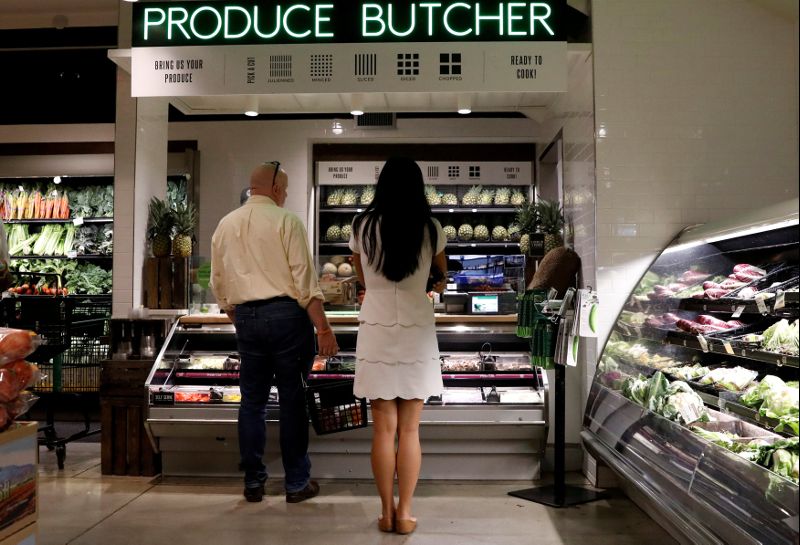
FILE PHOTO: A girl looks at pajamas while shopping at a Walmart store in Secaucus, New Jersey, U.S., November 11, 2015. REUTERS/Lucas Jackson/File Photo
October 13, 2017
WASHINGTON (Reuters) – U.S. retail sales recorded their biggest increase in 2-1/2 years in September likely as reconstruction and clean-up efforts in areas devastated by Hurricanes Harvey and Irma boosted demand for building materials and motor vehicles.
The Commerce Department said on Friday retail sales jumped 1.6 percent last month also buoyed by a surge in receipts at services stations, which reflected higher gasoline prices after Harvey disrupted production at oil refineries in the Gulf Coast.
Last month’s increase in retail sales was the largest since March 2015. Data for August was revised to show sales slipping 0.1 percent instead of the previously reported 0.2 percent drop.
Retail sales increased 4.4 percent on an annual basis. Economists polled by Reuters had forecast retail sales jumping 1.7 percent in September.
Harvey and Irma ravaged parts of Texas and Florida when the storms made landfall in late August and early September. Sales at gardening and building material stores increased 2.1 percent last month, the biggest increase since February, and followed a 0.6 percent rise in August.
Receipts at auto dealerships soared 3.6 percent likely as residents replaced flood-damaged motor vehicles. That was the largest rise since March 2015 and followed a 2.1 percent decline in August.
Retail sales were also lifted by a 5.8 percent surge in receipts at service stations. The increase was the largest since February 2013 and followed a 4.1 percent gain in August.
Excluding automobiles, gasoline, building materials and foodservices, retail sales increased 0.4 percent last month after being unchanged in August. These so-called core retail sales correspond most closely with the consumer spending component of gross domestic product. The rebound in core retail sales suggests the drag on the economy from the hurricanes will probably be modest.
Economists estimate the storms could subtract at least six-tenths of a percentage point from third-quarter GDP growth.
The economy grew at a 3.1 percent annualized rate in the April-June period.
Sales at electronics and appliance stores fell 1.1 percent last month and receipts at clothing stores rose 0.4 percent. Department store retailers are being squeezed by declining shopping mall traffic and increased competition from Amazon.com and other online retailers. Sales at online retailers climbed 0.5 percent in September. Receipts at restaurants and bars jumped 0.8 percent and sales at sporting goods and hobby stores fell 0.2 percent.
(Reporting by Lucia Mutikani; Editing by Andrea Ricci)

